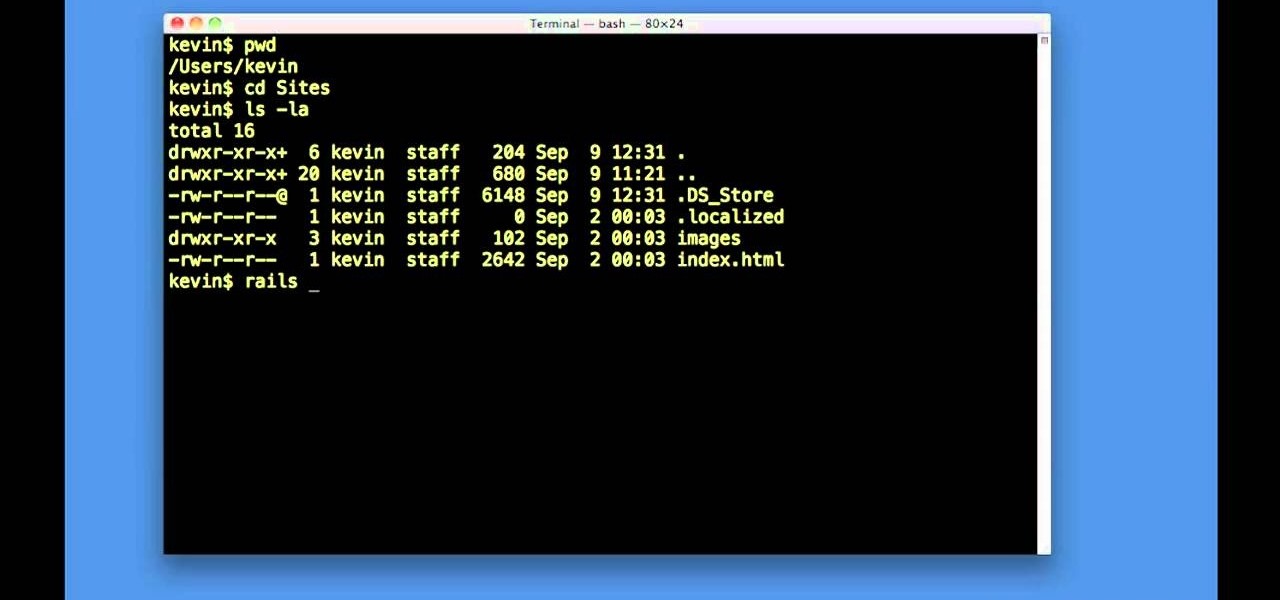

- #MAC TERMINAL COMMANDS LIST FREE#
- #MAC TERMINAL COMMANDS LIST MAC#
- #MAC TERMINAL COMMANDS LIST WINDOWS#
This screen, from MacOS 10.11, is typical of most shells in a GUI. When you launch it, you'll see something like this: IDG In MacOS, you’ll find the terminal in Applications > Utilities > Terminal. Often Unix distributions put this under the Administration or System menus. The options and output vary slightly, but you should have no trouble making sense of them.įirst, you must open a shell, sometimes called a terminal window.
#MAC TERMINAL COMMANDS LIST WINDOWS#
The commands we walk through below will work on any Unix-like system, including Linux, Darwin (the foundation of MacOS), FreeBSD, and even Windows with something like Git Bash or the new Bash shell in Windows 10. The Unix command line shell is roughly equivalent to the command window in Microsoft Windows (cmd or PowerShell). Before long those cryptic strings will be second nature. They aren't that difficult to learn, and this article will give you the 10 essential commands you need to get started. ĭon't worry if Unix commands seem like magical incantations or the mysterious internals of the system seem beyond your grasp.
#MAC TERMINAL COMMANDS LIST FREE#
If you long to break free of the constraints of the GUI or think that programming or administering remote machines is in your future, then learning the Unix command line is definitely for you. The command line is a window into the full, awesome power of your computer. But if you need to repeat that task many times, the command line is your savior. Point-and-click is wonderful whenever you need to do something once or twice.
#MAC TERMINAL COMMANDS LIST MAC#
But if you’re a Mac or Linux user and you want to get the most out of your operating system (and your keystrokes), you owe it to yourself to get acquainted with the Unix command line. This is a cool hidden feature, nonetheless, and I’m covering it.GUIs are great-we wouldn’t want to live without them. I mean, you can still see the battery icon to check if your laptop is charging or not, but whatever. To be honest, this is more of a gimmick but it could be useful if the light on your MagSafe connector has gone bad, and doesn’t work. Play iOS Charging Sound When MagSafe is Connected This command will save me countless hours of converting screenshots to JPEGs and then uploading them on the website.ģ0. This caused a major difficulty: I had to export every screenshot to a JPEG format before I could use it on the website. However, it also caused me to look for a solution, and it turns out, the solution is a command and a simple one at that.ĭefaults write type "jpg" Here, at Beebom, we use JPEG screenshots throughout the website Macs take screenshots in PNG, by default.

This will take a screenshot after 3 seconds, and save it as “delayedpic.jpg” on your computer. Screencapture -T 3 -t jpg -P delayedpic.jpg

Sure, on an iPhone long pressing leads to accented characters, but should it really be that way on a laptop? I don’t think so. Some might find that useful, I find it unimportant. Long pressing a key comes up with a menu for accented characters. The problem, simply, is that the keyboard on Mac behaves like one would expect the keyboard for a mobile device to behave. Disable the Default Long Press Action for KeysĮveryone of us has gone crazy at times and wanted to type messages that use unnecessary repeated letters like “hiiiiiiii”, or “yayyyy”. If, however, you’re like me, and you don’t find autocorrect useful enough, you can disable it on your keyboard with a simple command.ĭefaults write -g NSAutomaticSpellingCorrectionEnabled -bool false 21. If you think autocorrect helps you more than it annoys you, you’re golden because Mac keyboards come with autocorrect turned on, by default. Everyone has varying opinions on autocorrect, which is perfectly fine. Disable Autocorrect on KeyboardĪutocorrect is one of those features that can be both a life saving, and a terribly annoying tool. Note: I couldn’t actually test this, because I was obviously not going to freeze my Mac on purpose, but the documentation contains this feature, so it should work. All you need to do, is run sudo systemsetup -setrestartfreeze on and your Mac will automatically restart whenever (if, at all) it freezes.


 0 kommentar(er)
0 kommentar(er)
